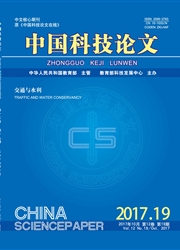

 中文摘要:
中文摘要:
This paper reports investigations into the preparation and characterization of surface molecularly imprinted nanoparticles(SMINs) designed to adhere to Helicobacter pylori(H.pylori).Imprinted nanoparticles were prepared by the inverse microemulsion polymerization method.A fraction of Lpp20,an outer membrane protein of H.pylori known as NQA,was chosen as template and modified with myristic acid to facilitate its localization on the surface of the nanoparticles.The interaction between these SMINs with the template NQA were evaluated using surface plasmon resonance(SPR),change in zeta potential and fluorescence polarization(FP).The results were highly consistent in demonstrating a preferential recognition of the template NQA for SMINs compared with the control nanoparticles.In vitro experiments also indicate that such SMINs are able to adhere to H.pylori and may be useful for H.pylori eradication.
 英文摘要:
英文摘要:
This paper reports investigations into the preparation and characterization of surface molecularly imprinted nanoparticles (SMINs) designed to adhere to Helicobacter pylori (H. pylori). Imprinted nanoparticles were prepared by the inverse microemulsion polymerization method. A fraction of Lpp20, an outer membrane protein of H. pylori known as NQA, was chosen as template and modified with myristic acid to facilitate its localization on the surface of the nanoparticles. The interaction between these SMINs with the template NQA were evaluated using surface plasmon resonance (SPR), change in zeta potential and fluorescence polarization (FP). The results were highly consistent in demonstrating a preferential recognition of the template NQA for SMINs compared with the control nanoparticles. In vitro experiments also indicate that such SMINs are able to adhere to H. pylori and may be useful for H. pylori eradication. (C) 2015 Chinese Pharmaceutical Association and Institute of Materia Medica, Chinese Academy of Medical Sciences. Production and hosting by Elsevier B.V.
 同期刊论文项目
同期刊论文项目
 同项目期刊论文
同项目期刊论文
 期刊信息
期刊信息
